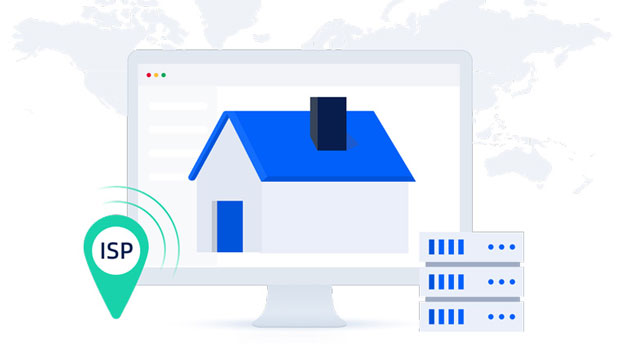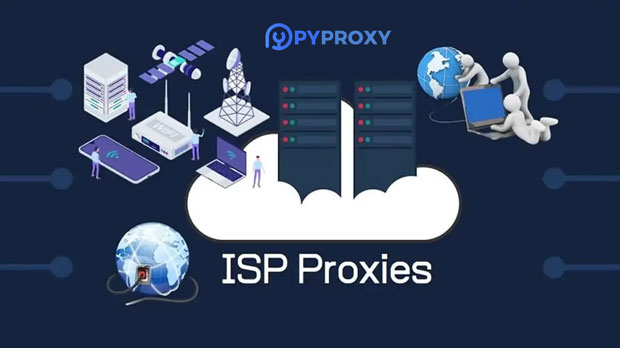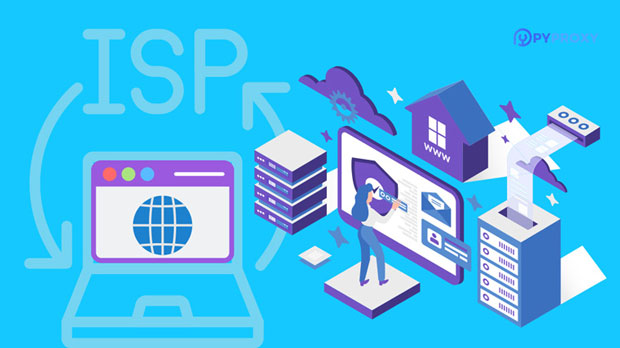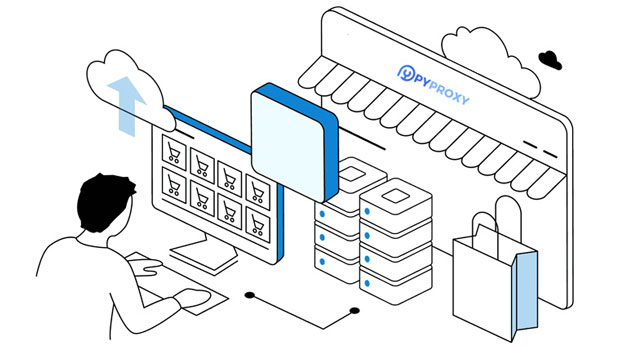How to use IP Port Proxy for sensitive operations e.g. online payments, banking transactions?
When conducting sensitive online transactions, such as online payments or banking operations, maintaining privacy, security, and anonymity is critical. One effective tool to enhance these elements is the use of IP and port proxies. Proxies can mask your real IP address, making it more difficult for malicious entities or hackers to track your online activities. This is particularly useful for activities such as logging into online banking accounts, making payments, or accessing financial services securely. By routing traffic through different IP addresses and ports, users can protect their identity, avoid geo-restrictions, and mitigate the risk of cyberattacks during sensitive operations. Understanding IP and Port ProxiesBefore diving into the practical applications, it is essential to understand what IP and port proxies are. - ip proxy: This acts as an intermediary between your device and the internet. When you use an IP proxy, your internet traffic passes through the proxy server, which assigns a different IP address to mask your original one. This is especially useful for hiding your geographic location and ensuring privacy. - Port Proxy: A port proxy works similarly, but it focuses more on directing traffic to specific ports, allowing users to access resources or services that might be restricted by certain network configurations. Port proxies are often used in more technical or security-focused contexts.Using these proxies effectively involves combining the benefits of both techniques to improve the security and privacy of sensitive online operations.Why Use Proxies for Online Payments and Banking Transactions?The use of proxies in sensitive operations, such as online payments or bank transactions, is crucial for several reasons:1. Enhanced Security: One of the biggest threats in online transactions is identity theft or fraud. By using proxies, you make it more difficult for hackers to trace your IP address and potentially access sensitive information like login credentials or financial details.2. Bypassing Geo-restrictions: In some cases, financial services or payment gateways may be restricted based on your geographic location. Using an IP proxy allows you to virtually change your location, granting you access to services that may otherwise be unavailable.3. Anonymity: Proxies mask your real identity, making it harder for third parties (including websites and tracking services) to collect data on your online behavior. This is particularly important when accessing personal or financial accounts, where privacy is paramount.4. Protection Against Cyberattacks: Cybercriminals often target online transactions, using various methods such as DDoS attacks or phishing to compromise users' data. Proxies add a layer of protection by obfuscating your real IP, making it more difficult for malicious actors to pinpoint your exact location or launch targeted attacks.How to Implement IP and Port Proxies for Sensitive TransactionsImplementing IP and port proxies during online payments or banking operations is not a one-size-fits-all process. Below is a step-by-step guide to setting up proxies to safeguard sensitive online actions:1. Choose the Right Proxy TypeThe first step in implementing proxies is determining the right type to use. There are various proxy types, including:- HTTP/HTTPS Proxies: These are ideal for secure browsing and online transactions. HTTP proxies work at the application layer and can be used for web-based services, while HTTPS proxies add an additional layer of encryption. - SOCKS Proxies: SOCKS proxies work at a lower layer of the internet protocol stack, providing more flexibility. socks5 proxies, for example, can be used for a wide range of applications beyond just browsing, such as secure email access, file sharing, or remote desktop usage.- residential proxies: These proxies assign you an IP address from an actual residential ISP, making them harder to block. Residential proxies can be beneficial when making online payments in a more authentic manner, as they are less likely to be flagged by financial platforms.2. Select a Secure Proxy ProviderOnce you've chosen the type of proxy, the next step is selecting a reliable provider. Ensure the provider offers high security, strong encryption, and reliability. Look for features such as:- IP Rotation: Frequent IP switching enhances anonymity and security. Regular rotation of your IP address helps reduce the risk of detection by financial institutions. - Speed and Reliability: Proxies should not slow down your transaction processes. Select providers with fast and stable proxy servers to ensure a smooth experience during online payments or banking operations.3. Set Up the Proxy ConfigurationOnce the proxy is chosen, configuring it for use in your sensitive transactions is the next step. This process typically involves entering the proxy's IP address, port number, and authentication credentials into the relevant settings of your browser or application.For browser-based operations, you can usually configure proxy settings directly within your browser’s network settings. For more complex setups, such as using proxies with banking applications, you may need to use a VPN (Virtual Private Network) or other specialized software to route all traffic through the chosen proxies.4. Use the Proxy for Secure TransactionsOnce everything is set up, you can begin using your proxy for online payments and bank transactions. It is recommended to test the configuration first by accessing a few websites to confirm that the proxy is working as expected. Always ensure that the proxy is active before conducting any sensitive operations.5. Monitor and Maintain Proxy SecurityTo ensure the ongoing security of your sensitive operations, regularly monitor your proxies. Check for any unusual activity or slowdowns that may indicate a breach. It is also essential to maintain up-to-date security protocols and ensure your device is protected with firewalls, antivirus software, and other security measures.Potential Risks and Mitigation StrategiesWhile proxies offer significant benefits, they also come with potential risks. Here are some common challenges users may face, along with strategies to mitigate them:1. Proxy Reliability: Not all proxies are created equal. Some may experience downtimes, slow speeds, or may be blacklisted. To mitigate this risk, use proxies that offer uptime guarantees and have a reputation for quality and performance.2. Security Gaps: If proxies are not configured properly or are used from unreliable providers, they may expose you to security risks. Always ensure that the proxies you choose use high-level encryption and secure tunneling protocols.3. Legal and Ethical Considerations: The use of proxies may violate certain terms of service or legal regulations, especially in the financial industry. Always check with your bank or payment provider to ensure that using proxies for online transactions complies with their policies.ConclusionIn today’s digital world, online transactions and banking operations demand robust security measures. Using IP and port proxies is an effective strategy to protect sensitive information, maintain anonymity, and avoid the risks of cyberattacks. By understanding how to choose, implement, and monitor proxies, users can ensure that their financial activities are secure and private. However, it’s crucial to use proxies responsibly and follow best practices to minimize any potential risks or complications.
2025-01-28

























































